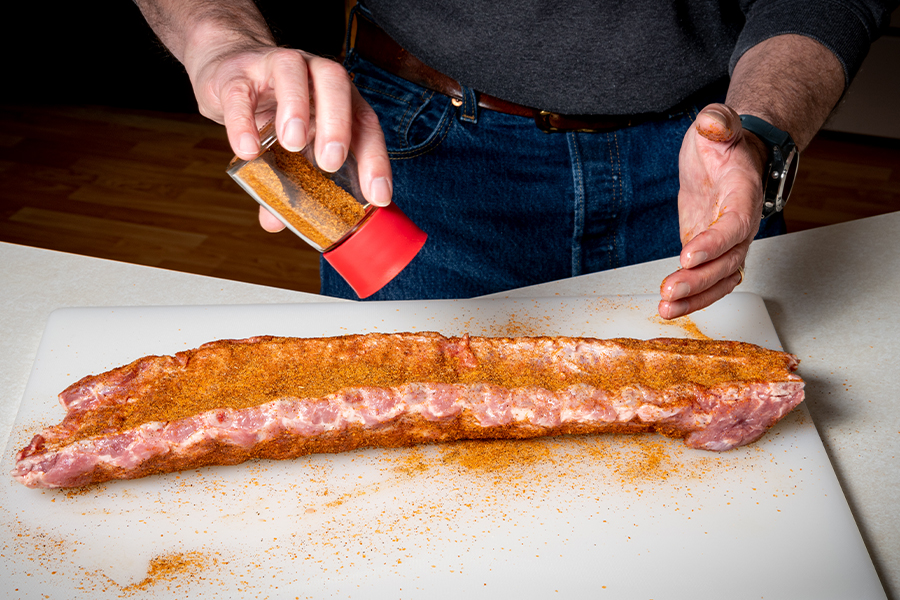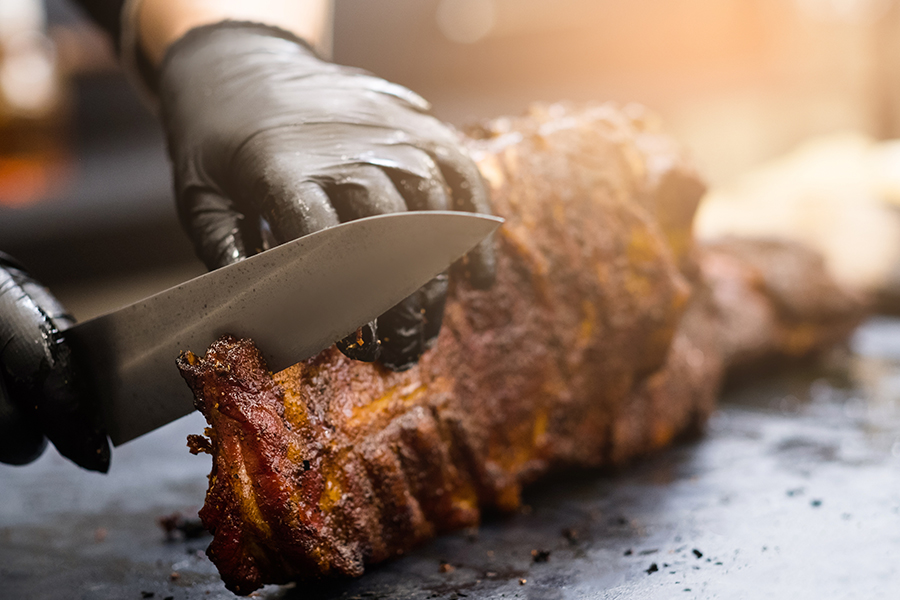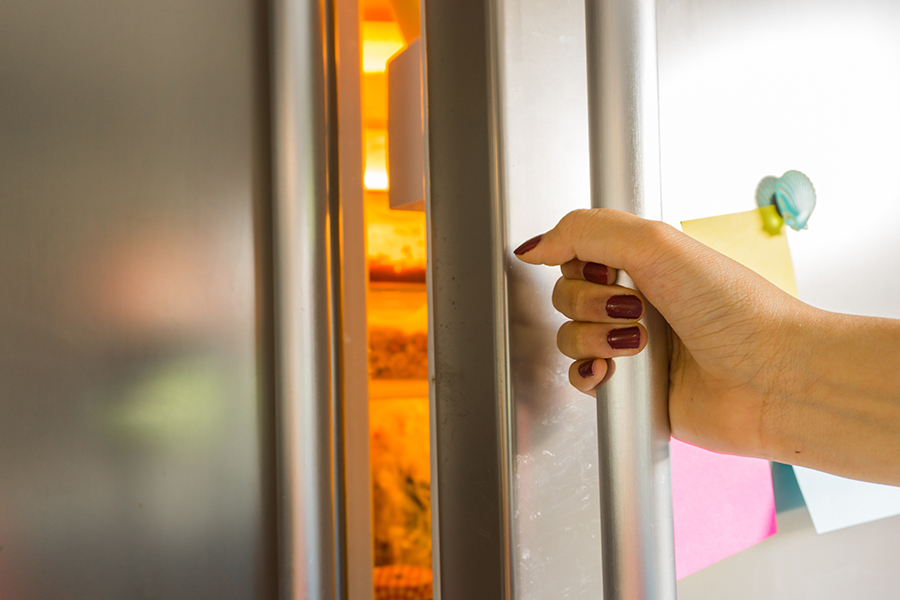
THAW
The best way to defrost pork is in the refrigerator in its wrapping. Thaw times vary by cut and size.
Small Roast: 3-5 hours per pound
Large Roast: 4-7 hours
One-inch Thick Chop: 12-14 hours
Ground Pork: estimated by package thickness
You can also defrost pork in the microwave, but it must be cooked immediately after microwave-thawing. Follow the microwave manufacturer’s guidelines for defrosting meat.
If you don’t have time to thaw your pork, it is safe to cook frozen or partially-frozen pork in the oven, on the stove or on the grill without defrosting it first, but the cooking time may be about 50% longer. Use a meat thermometer to check for doneness. Do not cook frozen pork in a slow cooker.
MARINATE
Marinating pork can help enhance flavor and tenderness, taking your meal to the next level without too much extra work. To marinate, soak pork in an airtight bag in the refrigerator for at least 30 minutes, but never longer than overnight. Marinating the meat longer creates a risk of the acids in the marinade turning the outside layer mealy and mushy. Keeping a small amount of the marinade back to add to the cooked meat as a sauce or glaze can pack an extra punch and boost flavor.

INTERNAL TEMPERATURE
The days of dry pork are over! One of the most overcooked meats, fresh pork requires a safe internal pork cooking temperature of 145° F and ground pork is safe at 160° F. Use a meat thermometer to make sure your meat is cooked safely and properly. Take a look at this table to help you stop overcooking your pork!
| CUT | TEMPERATURE |
| Pork loin Pork tenderloin Pork chop | 145° -160° F |
| Precooked ham | 145° -160° F |
| Ribs Pork shoulder Cutlets | Tender |
| Ground pork | 160° F |
GRILL
Grilling pork is a classic cooking method, and you can master your grilling technique with just a few simple tips. To prevent pork from sticking to the grate, scrub grates clean and coat with vegetable oil or a nonstick vegetable oil spray before using. Do not use sharp utensils that may pierce the pork when flipping, as piercing allows flavor-filled juices to escape. Instead, use spatulas or tongs for turning. Frequently flipping pork on a cooler area of the grill is better than accidentally burning it on an area that is too hot. Sugar-based sauces (many commercial barbecue sauces) tend to burn if applied too early—baste during the last few minutes of cooking.
ROAST
Roasting, very similar to baking, is a method of cooking pork in the oven in a shallow, uncovered pan, and without adding liquid to the pan. Any cut of pork can be roasted at 350° F unless otherwise noted.
SLOW COOK
Come home at the end of the day to a delicious, ready to eat meal by starting early and letting your meal cook throughout the day. Spend less time in the kitchen and let your slow cooker do the work. Nearly any craving can be satisfied with a slow cooker, from pulled pork, to meatballs, to chili, to tenderloin.
SMOKER
There are many ways to smoke pork, no matter your experience level. Delicious, smoky pork can be prepared on a kettle grill, pellet grill, in your preferred dedicated smoker or even on a gas grill (many modern gas grills come equipped with a metal smoker box that sits on top of a dedicated burner). The most popular pork cuts to smoke are pork shoulder, pork loin, pork chops, pork belly and pork ribs.
There are three methods of smoking meat: cold smoking, smoke roasting or hot smoking. Hot smoking is the most used and exposes the meat to both heat and smoke, cooking it and giving it flavor at the same time. Times and methods vary by pork cut and cooking appliance.

Proper storage is essential to maintaining the quality and safety of your pork. Each cut of meat has its own shelf life in the refrigerator or freezer.
CUT | TIME – Fridge | TIME – Freezer |
Ground pork | 1-2 days | 1-3 months |
Pork chops, tenderloins, or roasts | 2-4 days | 3-6 months |
Whole, cooked ham | 3-4 days opened | freezing not recommended –slice before freezing |
Bacon | 5-7 days | 1 month |
Sausage, hot dogs, deli meat | 7 days opened | freezing not recommended |
To properly wrap fresh pork to store in the freezer, follow these steps:
The tips on this page are shared from the National Pork Board’s Pork Checkoff. For more information, visit their website: pork.org